Advanced Analysis of Basic Fighter Maneuvers (BFM) in DCS WORLD.
Introduction to Basic Fighter Maneuvers (BFM) in DCS WORLD.
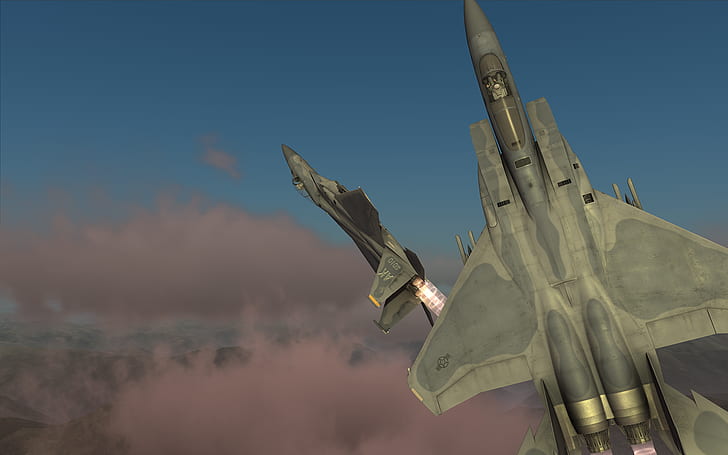
Basic Fighter Maneuvers (BFM) in DCS WORLD represent the core tenets of aerial combat and are crucial for achieving air superiority in a dogfight. Pilots must comprehend turn dynamics, including instantaneous turns, sustained maximum-rate turns, and minimum-radius turns, to maneuver effectively. This guide thoroughly explores these concepts while also delving into the intricacies of lead turns and their role in gaining a positional advantage over an adversary.
Furthermore, we analyze the “energy egg,” a critical framework for managing energy states effectively in aerial engagements. Understanding these elements in the context of the DCS F/A-18C Hornet, DCS F-16C Viper, and DCS MiG-29 Fulcrum will enable pilots to optimize their combat strategies for different engagement scenarios.
The principals of Basic Fighter Maneuvers (BFM) in DCS WORLD discussed here will help you understand Basic Fighter Maneuvers (BFM) or dogfighting basics. In the end it’s all about how much energy you have, when to spend it to kill your opponent and not become so low on energy that you are easily killed or lose control and fly into the ground.
It’s worth noting these concepts have been in place for the most part since WW1 and have changed little except the speeds and technology have increased.
Advanced Turn Geometry in BFM
Basic Fighter Maneuvers (BFM) in DCS WORLD require a comprehensive knowledge of advanced turn geometry in BFM so you can make decisions on relaxing the stick to gain energy or to climb and gain potential energy as well as a height advantage over an opponent. BFM is rarely fought in a flat plane simply round a horizontal circle. It is certainly much simpler to comprehend when this is the case but any pilot in DCS World who does this is probably going to die a fiery death in virtual combat. I know I struggle in the vertical or oblique turns using a vertical component as well as turning.
What is critical in every encounter is to “keep tally” because if you “LOSE SIGHT you will LOSE THE FIGHT”. THis old addige originated in the first world war when man was just discovering the world of dogfighting. You cannot kill or defend from an enemy if you cannot see them! So, ensure while your maneuvering your listening to the environmental sounds in your DCS aircraft of choice! Listen to the air and how the aircraft is handling so as to manage your energy but more importantly keep your eyes on the opponent all the time!
Tools like helmet mounted sights in modern aircraft from the F-18 to F-25 help maintain situational awareness with HUD symbology projected onto the pilots helmet visor. Incredibly useful tool to have when in a fast paced turning dogfight. Basic Fighter Maneuvers (BFM) in DCS WORLD will be so much better of you understand all these concepts fast.
- Joystick / HOTAS – AMAZON.com
- Rudder Pedals – AMAZON.com
- Throttle Quadrant – AMAZON.com
- Gaming Chair – AMAZON.com
- VR Headset – AMAZON.com
1. Instantaneous Turns – What are they?
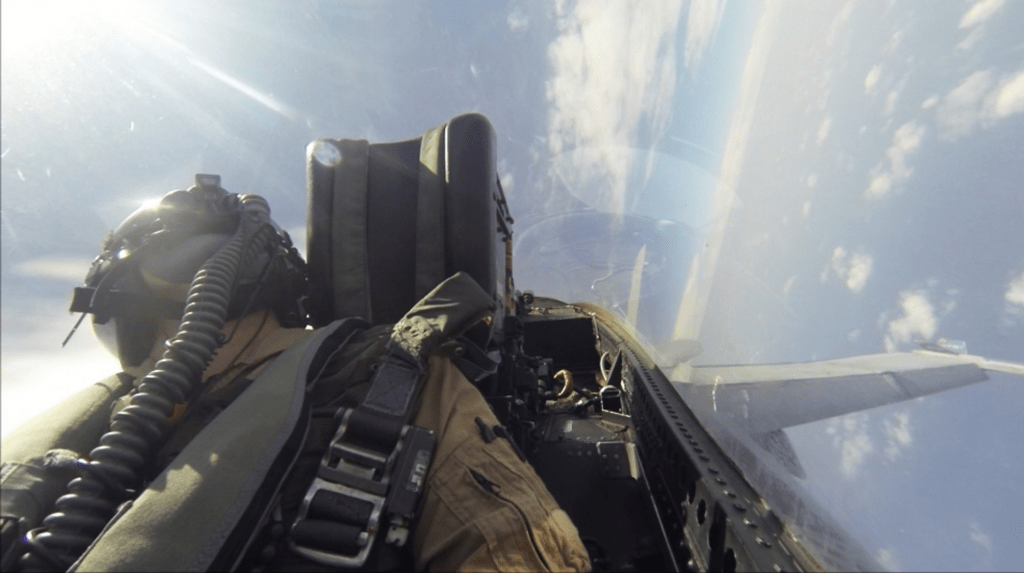
The instantaneous turn rate refers to the highest possible turn rate an aircraft can achieve at a given moment, typically attained by pulling maximum available G-forces while momentarily disregarding energy conservation. This turn is often performed at the maximum speed and G level of a given aircraft from the Spitfire the F-22 Raptor! It remains the same concept.
You pull to your airframes maximum limits in G and angle of attack (AOA) to get your nose around the circle fast. What’s important is the aircraft cannot sustain this for very long! Done well it will give you an advantage but practically you have to be very very quick to release the stick and keep the aircraft inside its best turn rate.
OPTIONS:
Option 1: Pull hard to get your nose on the target and kill it right away. You will be slow now, so you want to be in a great one circle aircraft like the F-18C Hornet with 54 degrees of AOA and controllable. The Hornet has an unfair advantage but its only as good as the nut behind the wheel! (It’s not the plane – It’s the Pilot – Top Gun Maverick)
Option 2: Keep your Aircraft in the top of its Turn Rate Band. Then you continue your turn turning the most degrees per second around the corner in an effort to out fly your opponent and kill them. This is a Two Circle fight, and the F-16 Viper is the King in the Real world here but in DCS the F-18 Hornet out rates it and so does the DCS World Mirage 2000. (FYI)
- Purpose: Ideal for rapid nose positioning to achieve a weapon solution or evade an incoming attack.
- DCS Aircraft Comparison:
- F/A-18C Hornet: Renowned for its high angle of attack (AoA) capabilities, enabling superior instantaneous turn performance even at lower speeds.
- F-16C Viper: Exhibits remarkable thrust-to-weight ratio, allowing for aggressive nose-pointing maneuvers, though sustained execution results in rapid energy loss.
- MiG-29 Fulcrum: Possesses exceptional initial turn response but suffers from poor energy retention, limiting its ability to sustain high-G engagements.
- Operational Utilization: Typically employed during high-aspect missile employment scenarios or for brief window gun solutions.
2. Sustained Maximum Rate Turns Winning Performance in the Right Jet!

The sustained turn rate refers to the highest turn rate an aircraft can maintain without excessive energy depletion, making it a cornerstone of prolonged engagements. The F-16 Viper is this type of aircraft and does it super well. Its power to weight is amazing and flown well you can outfly the Hornet and Mirage 2000, but you must concentrate on managing your speed i.e. Energy. Stay at 420-450 Knots and not slower or faster to keep the Viper deadly. (Please re read quote above :))
- Purpose: Balances turn rate efficiency with energy conservation, allowing for continuous maneuvering.
- DCS Aircraft Comparison:
- F/A-18C: Moderate sustained turn capabilities, requiring meticulous throttle and energy management.
- F-16C: Excels due to its low drag and high thrust, enabling prolonged turn engagements with minimal speed loss.
- MiG-29: Competitive for short bursts but constrained by inefficient fuel consumption and high-speed bleed rates.
- Tactical Application: Crucial in engagements where maintaining angles over an opponent is essential for setting up high-probability shots.
3. Minimum Radius Turns when Getting the Nose on Matters!
A minimum-radius turn occurs when an aircraft achieves the tightest possible turn circle at a given speed without inducing excessive drag or energy depletion. Challenging to fly and as with all maneuvers practice, practice & practice to be at home in your fighter of choice. The Hornet and Mirage are pretty amazing at doing this in DCS World for sure. In the right hands the Mirage is unbeatable.
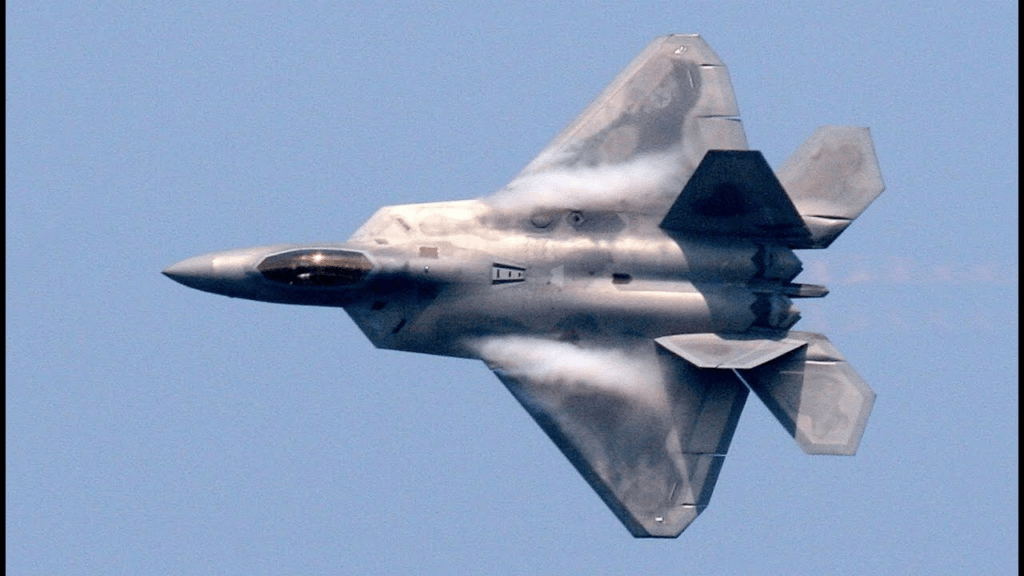
Frustratingly so but also it has the worst guns and gunsight in the whole DCS World aircraft lineup in my opinion at least. This could save you unless your opponent is very good. Just keep away from the mirage and keep it at a distance. The 30mm DEFA 552 rounds need to be fired close to you to kit convincingly.
- Purpose: Useful for out-turning an opponent in close-range fights or forcing an overshoot in a defensive situation.
- DCS Aircraft Comparison:
- F/A-18C: Excels in slow-speed, high-AoA situations, allowing for extremely tight-radius turns.
- F-16C: Prioritizes sustained speed, reducing its effectiveness in extremely tight turns at low speeds.
- MiG-29: Performs well in brief, aggressive turns but is hindered by poor energy retention.
- Strategic Employment: Frequently utilized when transitioning from defensive to offensive positions.
The Lead Turn: Tactical Execution for Advantageous Positioning
A lead turn occurs when a pilot initiates a turn before the adversary crosses their 3/9 line, allowing for an advantageous repositioning in a fight. I have a previous post on lead turns I highly recommend you read HERE. This explains how and what to look for but I’ll give you the main points. The Lead turn or turn circle entry are pretty amazing ways of getting on your opponent’s six fast and surprise the hell out of them.

As your opponent flies towards you at about 45 degrees in front of you the enemy will be relatively steady in your canopy. Relatively slow movement towards your rear. There will be a point where the enemy aircraft seems to accelerate fast heading behind you. If you can detect this fast translation and turn as hard as you can towards the enemies six o’clock you can often find yourself in an unreal location right in the kill zone.
Done well you will find yourself in a very advantageous position. Kill them! Practice – Practice Practice. Set up a mission in DCS WORLD editor and practice. You have to see it to understand. A few words on a page won’t always help you see what’s important.
Recognizing and Executing a Lead Turn
- Recognition: Identifying the optimal moment to start turning before the merge ensures a superior offensive position.
- Aircraft-Specific Implementation:
- F/A-18C: Effective at lower speeds due to superior AoA performance.
- F-16C: Requires higher speeds to avoid excessive energy depletion.
- MiG-29: Effective in sharp lead turns but requires precise energy management.
- Tactical Consideration: Essential in one-circle engagements where gaining angular advantage is the priority.
The Energy Egg: A Framework for Energy Management
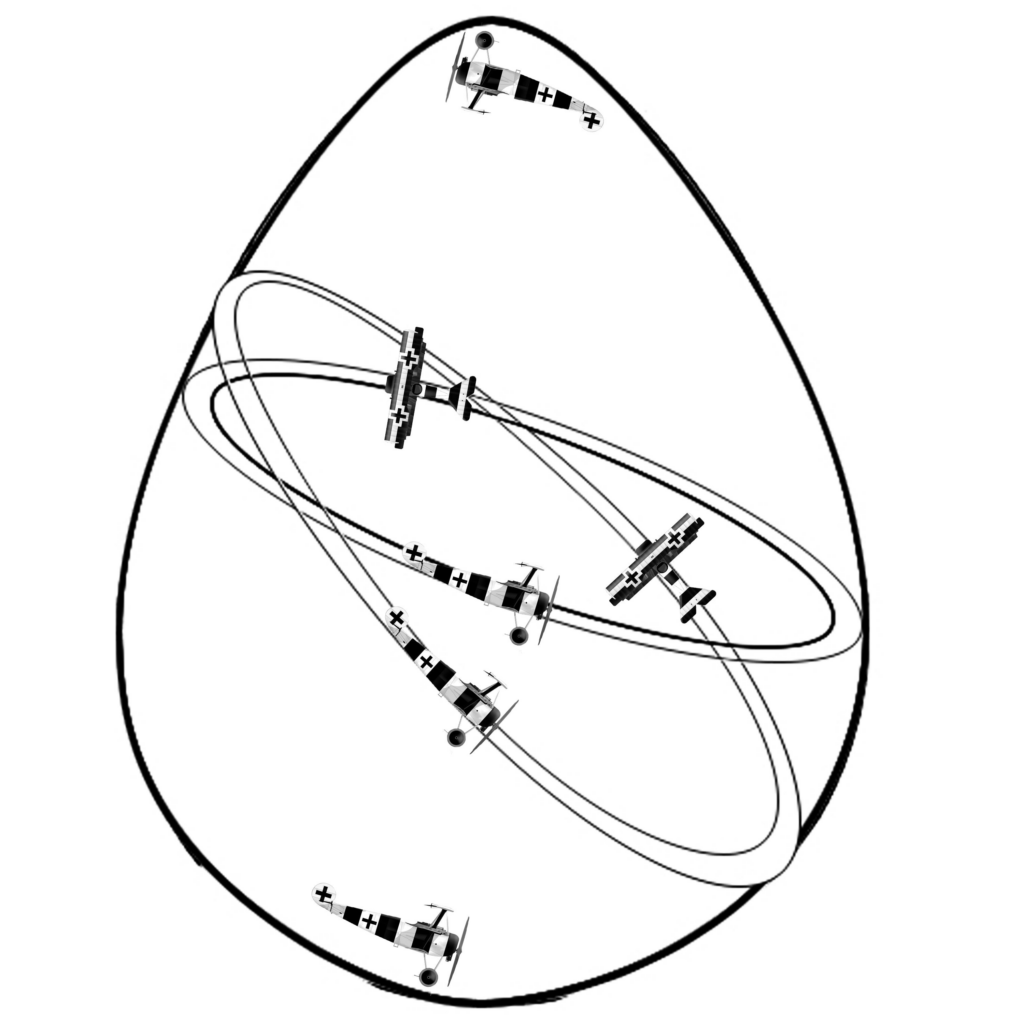
The energy egg is a visualization tool that represents an aircraft’s energy state concerning turn performance, helping pilots optimize energy use in combat. This can be a struggle for newbie pilots to get their head around. The energy egg as you can see in the diagram is narrow at the top and wider at the bottom. At the top gravity will help you turn even with zero G’s applied to the jet. The nose wants to drop naturally. So, adding some G will get your nose around much faster at the top than the bottom.
The bottom you have speed and lots of energy and the natural G is slowing your turn upward. Again, practice this by doing loops in your favorite aircraft and see what speeds you need to enter the vertical. Done to slow you stall and the opponent comes down on top of you and kills you while you’re helpless. The Mig-29 and Viper have lots of excess power and will drag you into a vertical fight that a Hornet struggles in.
- Latest CPU’s Available Now – Amazon.com
- Get a NEW GPU Best Performance – AMAZON.com
- Upgrade RAM Here today – AMAZON.com
- Prebuilt PC Options – AMAZON.com
Leveraging the Energy Egg Effectively
- Purpose: Enables pilots to maximize turn performance while conserving sufficient energy for follow-up maneuvers.
- Aircraft-Specific Application:
- F/A-18C: Requires careful AoA control to remain within the energy egg and avoid excessive speed bleed.
- F-16C: Benefits from a high thrust-to-drag ratio, making it easier to sustain within the energy egg.
- MiG-29: Requires strict throttle control due to rapid speed loss in high-G turns.
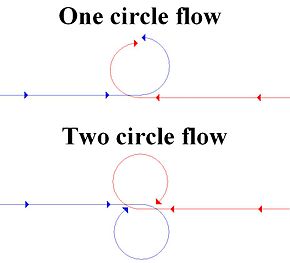
Ideal Entry Speeds for Vertical/Oblique Turns
Here are some typical speeds these incredible aircraft can be flown in the vertical in BFM.
- F/A-18C: 350-400 knots
- F-16C: 450-500 knots
- MiG-29: 450 knots
- Application Consideration: Entering at optimal speeds ensures effective vertical maneuver execution while conserving energy.
Expanded Glossary of Advanced BFM Terminology
Angle of Attack (AoA) – The angle between the aircraft’s chord line and the relative wind. Energy Management – The strategic control of kinetic and potential energy to optimize maneuverability.
One-Circle Fight – A turning engagement where both aircraft maneuver in the same direction, favoring nose authority.
Two-Circle Fight – A turning engagement were aircraft maneuver in opposite directions, emphasizing sustained rate advantages.
Overshoot – When an attacker moves past the target due to excessive closure rate, potentially reversing roles in the engagement.
Vertical Merge – An engagement initiated in the vertical plane, often used to exploit energy advantages over an adversary.
High Yo-Yo – A maneuver designed to reduce closure rate while maintaining an offensive position.
Low Yo-Yo – A maneuver used to regain angles on an opponent by increasing closure rate momentarily.
Basic Fighter Maneuvers (BFM) in DCS WORLD – Conclusion
Achieving proficiency in BFM demands an advanced understanding of turn geometry, tactical lead turns, and optimal energy management through the energy egg. The DCS F/A-18C, F-16C, and MiG-29 each possess distinct strengths and weaknesses, requiring pilots to tailor their maneuvering strategies accordingly. By integrating these principles into their combat repertoire, pilots can significantly enhance their dogfighting capabilities and secure superiority in aerial engagements.
What are your thoughts on these BFM principles? Share your experiences and insights in the comments!
Author
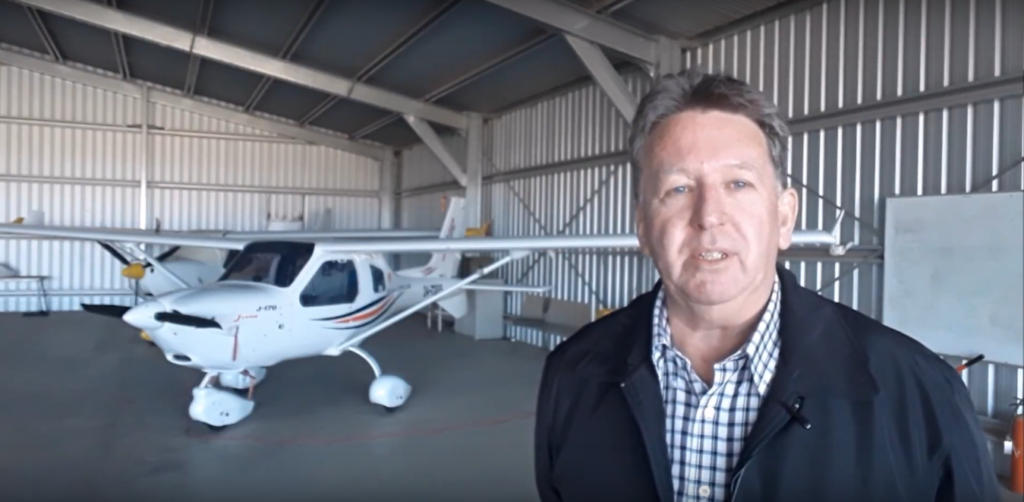
Brendon McAliece (Aka Gunnie) is a military veteran with 23 years working on Jet Fighters, their weapons systems and ejection seat/module systems as well as munitions and R&D. Involved with flight simulation since the 1980s, he has flown all the major flight simulators over the years.
He is an Australian expat who has lived in Malaysia, UK, Saudi Arabia and more recently Thailand. He is a multi-lingual blogger who loves to share his life experiences here on LetsFlyVFR.com and DreamingGuitar.com, with his lifestyle and Travel experiences Blog plus his Dreaming Coffee website.
Learn More @
DreamingGuitar.com – DreamingCoffee.com – LetsFlyVFR.com
( HOME – BLOG – SHOP – ABOUT )
As an Amazon affiliate I may benefit from qualifying sales.
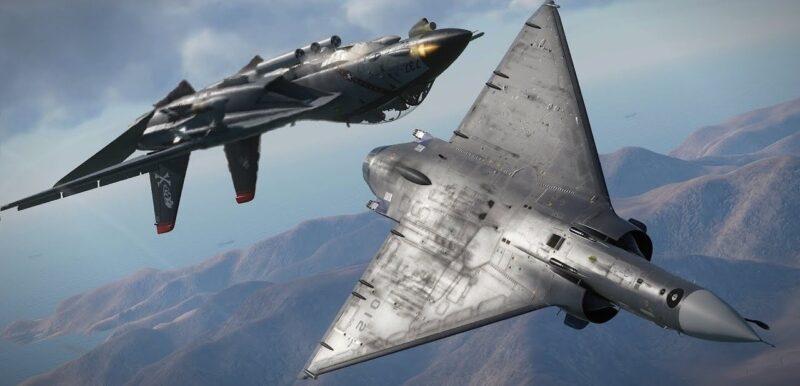
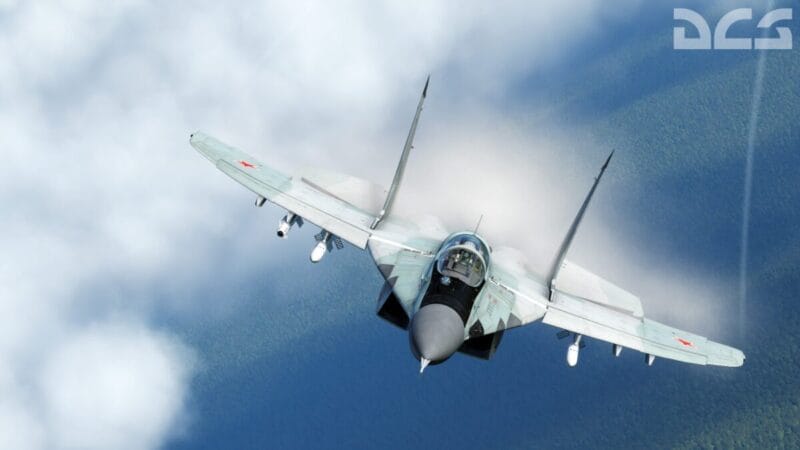
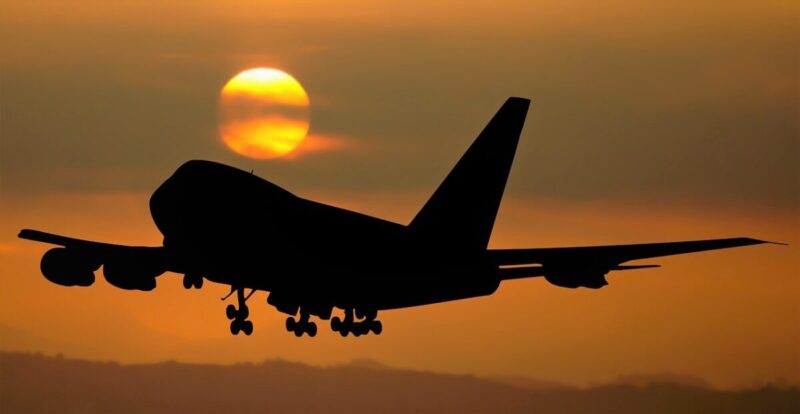
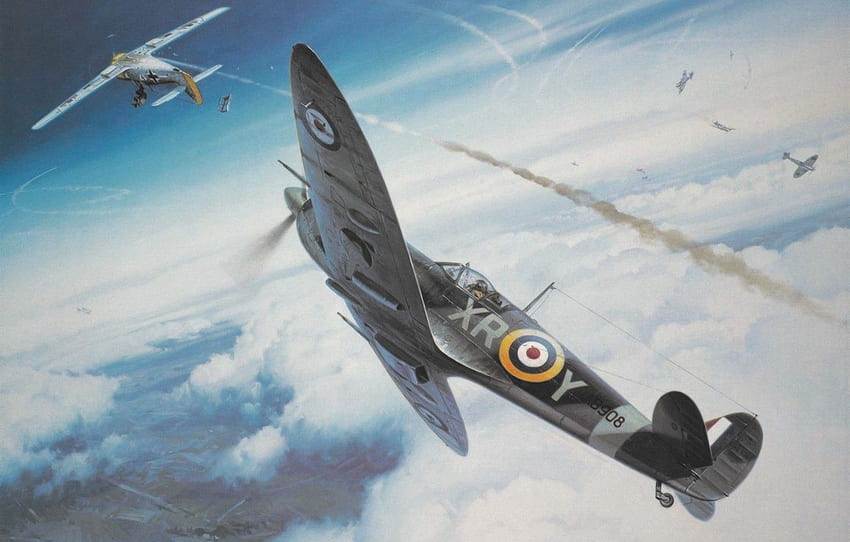


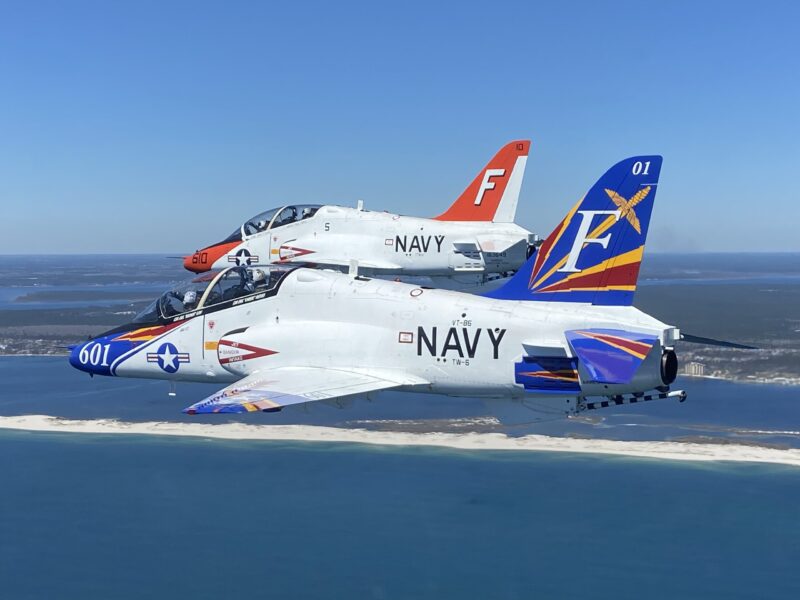

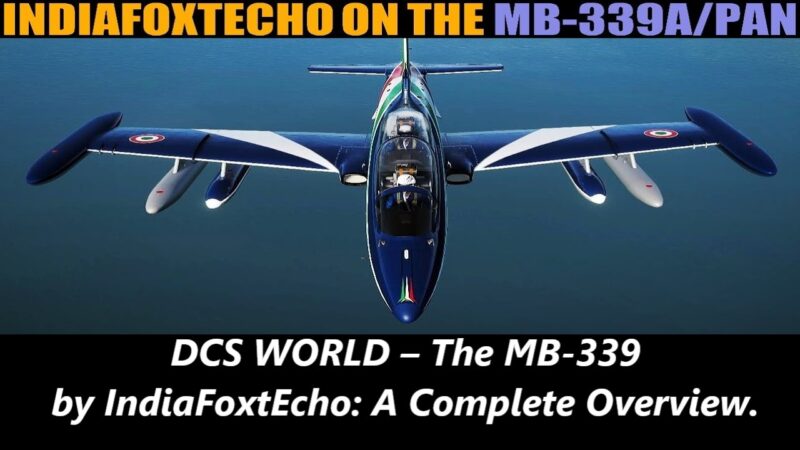

3 responses to “Advanced Analysis of Basic Fighter Maneuvers (BFM) in DCS WORLD.”